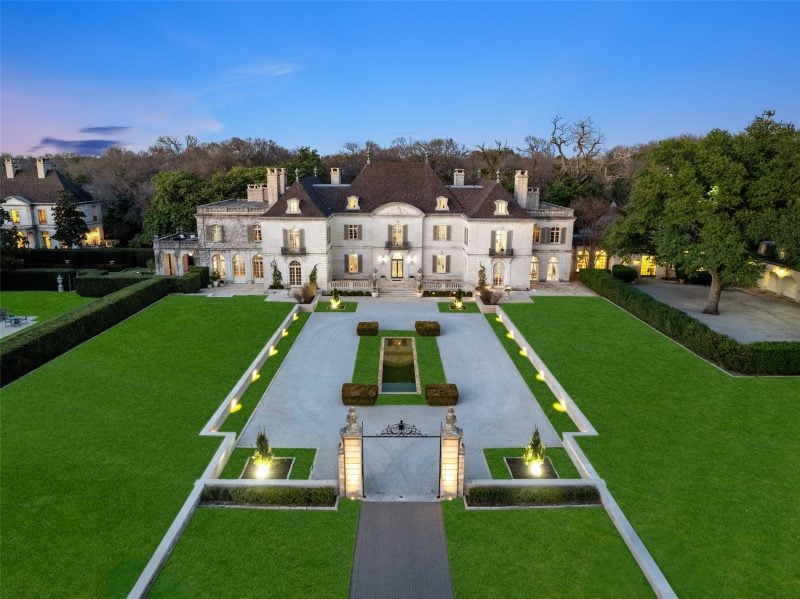The 30 Best Places to Live in New York: Top Neighborhoods and Cities

New York offers diverse living environments that cater to different lifestyles and preferences across the state.
From bustling metropolitan areas to charming small towns, residents can choose from urban centers with world-class amenities, historic communities along the Hudson River, and college towns that blend academic culture with local character.
This comprehensive guide examines thirty distinct locations throughout New York, evaluating factors such as cost of living, local amenities, community character, and quality of life to help potential residents make informed decisions.
Each area presents unique advantages, whether someone seeks the energy of city life, the tranquility of smaller communities, or access to natural landscapes and recreational opportunities that define much of the state’s appeal.
Here are the 30 best places to live in New York:
30. Harrison
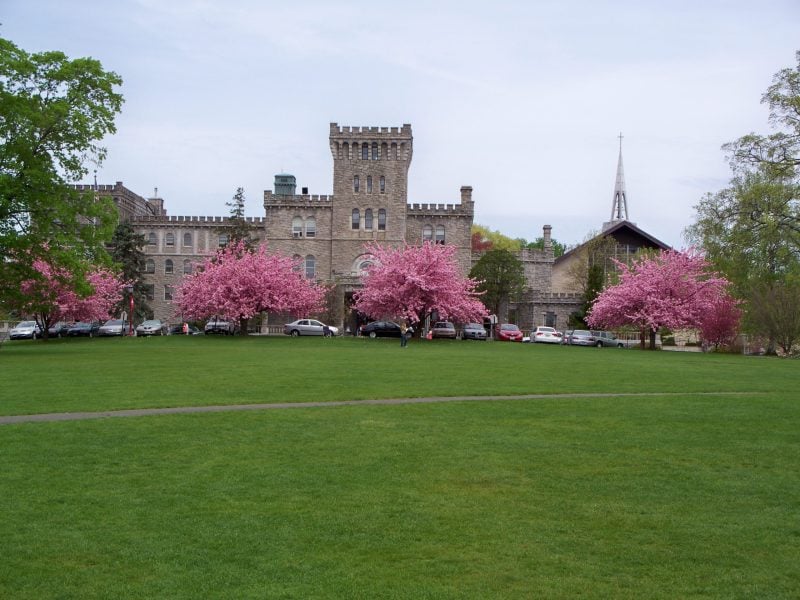
Harrison stands as one of Westchester County’s most desirable bedroom communities. The village offers convenient access to Manhattan through train and bus connections.
This affluent area features high-end shopping and dining options. Residents benefit from top-rated schools and multiple golf courses within the community.
Harrison maintains a population of approximately 28,135 people. Families make up the majority of households, with 21.2% of residents under 18 years old.
The typical household earns $128,393 annually, well above the national median. The poverty rate sits at just 4.6%, significantly lower than national averages.
Home prices exceed New York State’s average of $481,023. The community’s mean income reaches $244,371, reflecting its status as an upscale suburb.
CNN Money has recognized Harrison among the top 100 small towns in the United States.
29. Plattsburgh
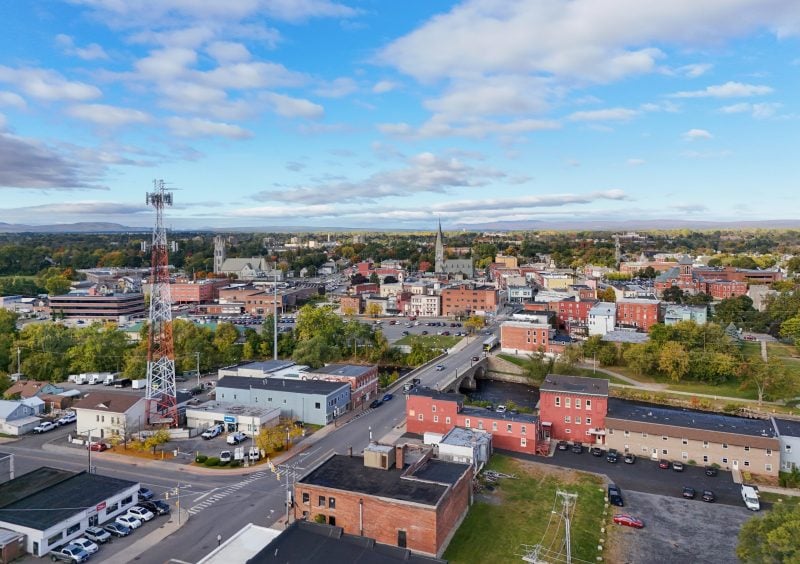
Plattsburgh sits on Lake Champlain’s western shore in New York’s North Country. The city combines natural beauty with historical charm and strong community connections.
The downtown area stands out as one of the best places to live. Residents enjoy small shops, restaurants, and entertainment venues within walking distance.
Home prices in Plattsburgh are significantly lower than New York’s state average of $481,023. This affordability makes it attractive for families and individuals seeking value.
The city offers close proximity to the Adirondack Mountains and the Canadian border. Lake Champlain provides recreational opportunities year-round.
Plattsburgh appeals to those seeking an active lifestyle with outdoor activities. The area supports walking, biking, and participation in local events throughout the community.
28. Florence
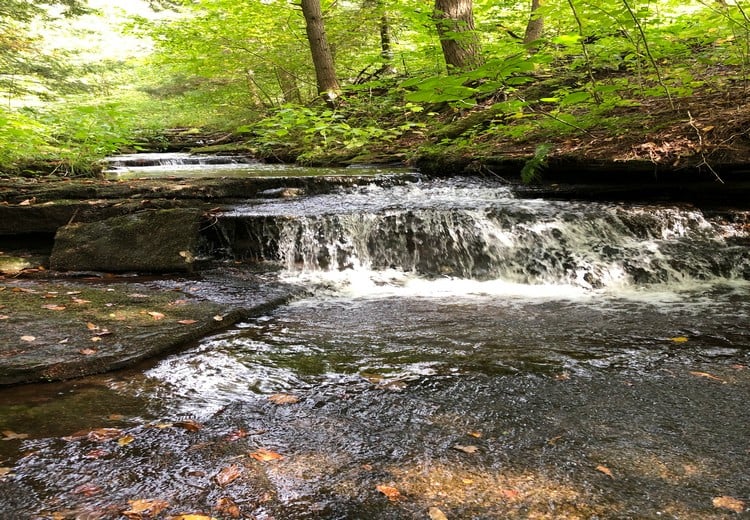
Florence is a small town located in Oneida County in central New York. The community sits near Syracuse, providing residents with convenient access to urban amenities while maintaining a rural atmosphere.
The town offers a close-knit community environment where neighbors know each other. Local restaurants and shops serve the area’s residents and provide essential services.
Florence features several parks and trails that attract outdoor enthusiasts. These natural areas offer opportunities for hiking, walking, and recreational activities throughout the year.
The town’s location provides easy access to larger cities for employment and entertainment options. Residents can enjoy small-town living while remaining connected to regional economic centers.
Housing costs in Florence tend to be lower than in nearby metropolitan areas. This affordability makes it attractive for families and individuals seeking homeownership opportunities.
27. Ticonderoga
![]()
Ticonderoga sits nestled in the Adirondack Mountains with a population of 3,427 residents. This small town offers crime rates 40% lower than the national average, making it one of New York’s safest communities.
The town attracts many retirees, with over 30% of residents above age 60. Home prices remain significantly below the state average of $481,023, providing affordable housing options.
Fort Ticonderoga serves as the area’s most notable landmark. The historic site features an extensive collection of 18th-century wartime artifacts and hosts family-friendly historical reenactments.
Ticonderoga experiences four distinct seasons and provides access to parks and green spaces. The scenic mountain location offers outdoor recreation opportunities year-round.
The quiet community combines historic charm with natural beauty in the Adirondacks.
26. Clayton
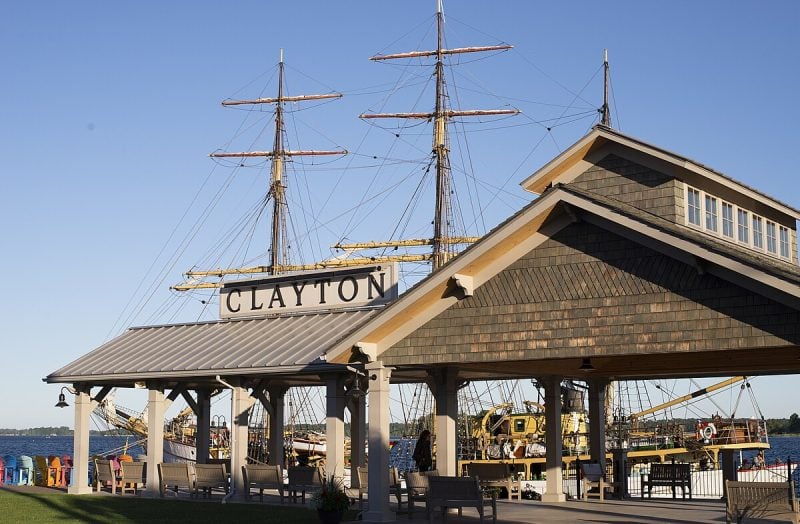
Clayton is a small town in Jefferson County with a population of 4,727 residents. The community sits in New York’s Thousand Islands region, offering scenic beauty and outdoor recreation opportunities.
The town provides a suburban-rural atmosphere where most residents own their homes. Families and young professionals make up much of the population, with residents generally holding conservative views.
Clayton offers numerous parks and outdoor activities including fishing, boating, and camping. The area’s natural surroundings attract those seeking a quieter lifestyle near water.
Housing costs in Clayton are significantly lower than New York’s state average of $481,023. However, some properties may require maintenance and updates.
The town receives 40.4 inches of annual rainfall, making it drier than most New York locations. Winter brings the heaviest precipitation at 30% of yearly totals.
Public schools in Clayton perform above average. The small arts scene provides cultural activities, though options remain limited compared to larger cities.
25. Irvington

Irvington is a picturesque village in Westchester County with 6,541 residents. The community sits along the Hudson River and offers stunning waterfront scenery.
This suburban enclave provides an urban-suburban mix that appeals to families and young professionals. Most residents own their homes in this well-established neighborhood.
The village features numerous restaurants, coffee shops, and parks within walking distance. Residents enjoy easy access to recreational activities and dining options.
Irvington receives high marks for quality of life with an overall rating of 7.7 out of 10. The community scores particularly well in education and weather categories.
Housing costs reflect the area’s desirability, with home prices exceeding New York’s state average. The village maintains its charm while providing convenient access to New York City for commuters.
24. Beacon
![]()
Beacon sits along the Hudson River in Dutchess County with a population of approximately 14,600 residents. The city offers small-town charm while maintaining convenient access to New York City for commuters.
The median income reaches $100,443, with median home values around $406,400. Most residents own their homes in this dense suburban community.
Beacon features numerous restaurants and parks throughout the city. Cultural attractions include Dia, which showcases modern art installations.
Outdoor enthusiasts appreciate Hudson Highlands State Park, which provides hiking and camping opportunities. The annual Beacon Sloop Club Clearwater Festival adds to the community’s event calendar.
The city ranks among desirable Hudson Valley locations due to its proximity to Manhattan. Neighborhoods vary significantly in quality and home values across different areas of Beacon.
23. Mamaroneck
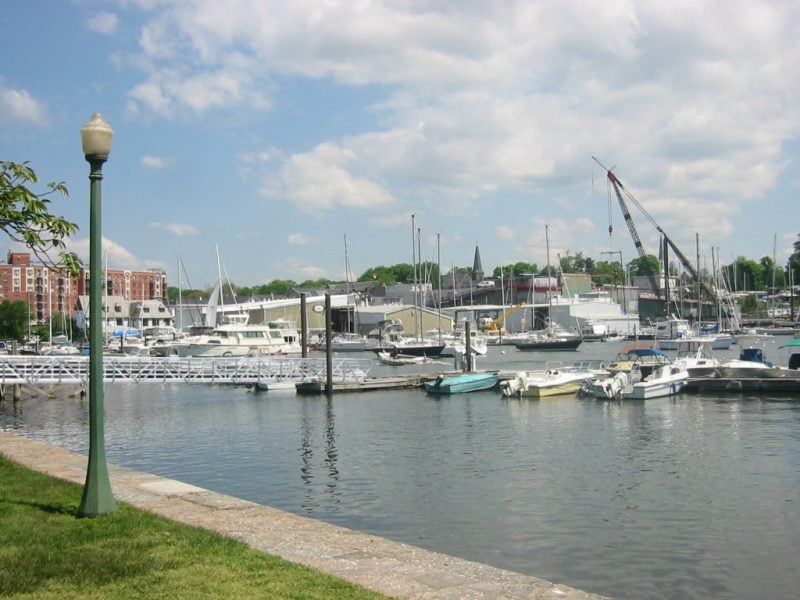
Mamaroneck stands as one of Westchester County’s most desirable suburbs. This affluent village offers residents an urban-suburban blend with excellent access to New York City.
The community has a population of approximately 19,840 people. Most residents are homeowners who value the area’s stability and quality of life.
Families make up the majority of households in Mamaroneck. About 23% of residents are children under 18 years old, reflecting the town’s family-friendly atmosphere.
The village features numerous restaurants, coffee shops, and well-maintained parks. Public libraries and recreational facilities provide additional amenities for residents.
Natural beauty combined with modern suburban conveniences makes Mamaroneck attractive to many. The area offers various trails and outdoor spaces for recreation and fitness activities.
Home prices in Mamaroneck exceed New York State’s average significantly. This reflects the high demand and desirability of the location.
22. Larchmont

Larchmont is a waterfront village in Westchester County with a population of approximately 6,500 residents. The community sits just 18 miles from midtown Manhattan along the Long Island Sound.
The village offers excellent public schools and maintains a strong sense of community. Tree-lined streets feature stately homes and well-maintained neighborhoods throughout the area.
Larchmont Village provides convenient shopping and dining options within its compact 1.1 square mile area. Residents enjoy easy access to parks, recreational facilities, and waterfront activities.
The location provides direct train access to New York City for commuters. This proximity to Manhattan combined with suburban amenities makes it attractive to families and professionals.
Most residents own their homes in this affluent community. The village has consistently ranked among top places to live in New York and nationally.
21. Mount Kisco
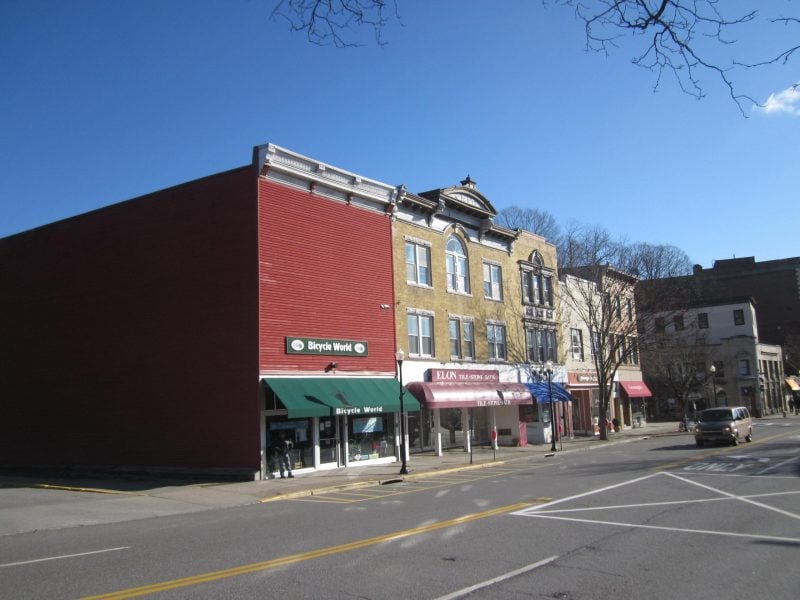
Mount Kisco stands out as a premier suburban community in Westchester County. This village maintains a population of approximately 10,800 residents who enjoy an urban feel while retaining small-town charm.
The community ranks highly among New York’s best places to live. Mount Kisco earned the fourth-best ranking statewide among municipalities with populations over 10,000 according to real estate analysts.
Young professionals gravitate toward this area for its vibrant downtown district. The village offers diverse shopping and dining establishments alongside cultural attractions like the Caramoor Center for Music and Arts.
Most residents own their homes in this desirable location. The community provides excellent schools and maintains low crime rates, contributing to its strong livability scores.
Mount Kisco delivers recreational opportunities for outdoor enthusiasts. Hiking trails and parks complement the bustling commercial center, creating balanced lifestyle options for families and working professionals.
20. Newburgh
![]()
Newburgh offers significantly more affordable housing compared to New York’s state average of $481,023. The city attracts residents seeking lower cost of living in the Hudson Valley region.
The city has a population of approximately 28,146 residents. Newburgh provides access to the scenic Hudson River waterfront and historic architecture throughout its neighborhoods.
However, the city faces economic challenges with a poverty rate of 22%. The typical household income is $43,435, which falls below the national median.
Newburgh’s location provides convenient access to major metropolitan areas while maintaining a smaller city atmosphere. The community offers various local amenities and recreational opportunities along the Hudson River.
Residents can find diverse housing options at prices well below state averages. The city continues developing its neighborhoods and improving local infrastructure for current and future residents.
19. Schenectady
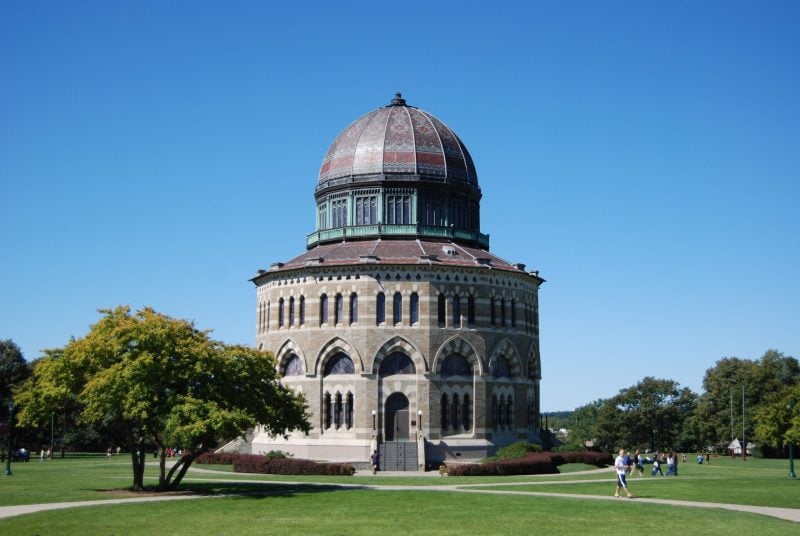
Schenectady sits in upstate New York along the Hudson River, approximately 160 miles north of New York City. The city combines traditional values with modern amenities across its diverse neighborhoods.
The historic Stockade neighborhood stands out as one of the most popular areas. This district holds a place on the National Register of Historic Places and attracts residents seeking character-rich housing.
Housing quality varies significantly throughout the city. Some neighborhoods offer higher property values and better amenities than others.
Schenectady provides options for young professionals, families, and retirees. The community is known for friendly residents who are willing to help newcomers adjust to city life.
When selecting a neighborhood, residents should consider factors like housing costs, school quality, and commute times. Local amenities and safety levels also vary by area within the city.
18. Ossining
Ossining sits 30 miles north of Manhattan in Westchester County. The town has a population of approximately 39,317 residents. Most people own their homes in this suburban community.
The location offers stunning Hudson River views and waterfront access. Metro-North provides direct train service to New York City for commuters.
Westchester Magazine ranked Ossining as the second-best place to live in the county. The town scored highly for its riverside location and diverse population.
The downtown area features unique shops and restaurants, including Cravin’ Jamaican and Good Choice Kitchen. Residents enjoy numerous parks and recreational facilities throughout the area.
Ossining hosts several annual events like the Village Fair and Portuguese Fair. The town’s architecture spans multiple eras, with many buildings listed on the National Register of Historic Places.
17. Glens Falls
Glens Falls sits in the northern part of New York State and has earned recognition from U.S. News as one of the best places to live. The city offers significantly more affordable housing compared to the state average of $481,023.
Known locally as “Hometown U.S.A,” Glens Falls attracts residents with its quaint downtown area and vibrant arts scene. The small city provides a community-focused lifestyle that appeals to many families and professionals.
The city ranks well for cost of living, housing affordability, and education quality according to various livability assessments. Its location in Warren County provides access to both urban amenities and natural attractions.
Residents benefit from the proximity to the Adirondack Mountains while maintaining access to professional opportunities in the Capital Region. The combination of affordability and quality of life makes Glens Falls an attractive option for those seeking small-city living.
16. Cohoes
Cohoes is a small city in Albany County with a population of 16,264 residents. The city ranks as the fifteenth largest in the county and offers an affordable living environment.
The cost of living in Cohoes receives high marks, scoring 8 out of 10 according to ranking systems. This makes it an attractive option for residents seeking budget-friendly housing in New York.
Housing quality varies significantly across different neighborhoods within the city. The best areas are typically determined by median home values and market demand from potential residents.
Cohoes benefits from its location in the Capital Region, providing access to urban amenities while maintaining a smaller city atmosphere. The city offers a blend of affordability and livability that appeals to many New York residents.
15. Hudson
Hudson sits along the Hudson River in Columbia County, offering residents a blend of historic charm and modern amenities. The city features well-preserved 19th-century architecture and a walkable downtown area.
The quality of neighborhoods within Hudson varies significantly based on median home values. Higher-value areas typically offer lower crime rates and better quality of life amenities.
Hudson’s location provides easy access to both natural areas along the river and cultural attractions. The city has developed a reputation for antique shops, art galleries, and restaurants that attract visitors from nearby metropolitan areas.
Residents benefit from the city’s compact size, which makes daily errands and commuting manageable. The historic district contains many restored buildings that contribute to the community’s character and appeal.
14. Binghamton
Binghamton sits in the Southern Tier of New York near the Pennsylvania border. The city offers one of the state’s most affordable housing markets with home prices well below New York’s average of $481,023.
This former manufacturing hub maintains a diversified economy with IBM as a major employer. The city serves as a transportation gateway to other areas of upstate New York.
Residents enjoy a low cost of living compared to other New York cities. The area features performing arts venues and cultural amenities despite its modest size.
Binghamton combines urban conveniences with access to natural beauty in the surrounding region. The poverty rate stands at 32.7% with median household income around $35,730.
The city appeals to those seeking affordable living in New York state. Multiple neighborhoods offer different price points and community characteristics for potential residents.
13. Poughkeepsie
Poughkeepsie sits in Dutchess County with a metropolitan area population of 675,601 people. The city attracts young professionals with its median age of 39, which is above the national average.
Housing costs reflect the area’s desirability. The median home value reaches $276,500, approximately 21% higher than national figures. Average rent sits at $1,240, running 14% above national rates.
The city offers varied neighborhood quality across different areas. Market-driven demand creates distinct pockets where residents prefer to live based on home values and amenities.
Crime rates and quality of life metrics influence residential preferences. Public schools, local amenities, and real estate options contribute to the area’s appeal for families and working professionals.
Poughkeepsie ranks among New York’s livable cities despite housing costs. The location provides access to employment opportunities while maintaining community amenities that support different lifestyle preferences.
12. Saratoga Springs
Saratoga Springs combines historic charm with modern amenities in upstate New York. The city is famous for its natural mineral springs and Victorian architecture.
The Saratoga Race Course draws visitors from across the country during racing season. This world-renowned venue adds cultural significance to the community.
Home prices in Saratoga Springs remain below New York’s state average of $481,023. The cost of living appeals to families and professionals seeking affordability outside major metropolitan areas.
The East Side offers some of the most desirable residential areas. These neighborhoods feature tree-lined streets and well-maintained properties.
Downtown Saratoga Springs provides restaurants, shops, and entertainment venues within walking distance. The area maintains a vibrant atmosphere year-round.
The city consistently ranks among the best places to live in the United States. Quality of life and community amenities contribute to its strong reputation.
11. Peekskill
Peekskill sits along the Hudson River in Westchester County, offering residents an urban-suburban mix with a population of 25,484. The city attracts families and young professionals who appreciate its proximity to New York City.
Home prices in Peekskill remain below the state average of $481,023, making it more affordable than many New York locations. Most residents own their homes in this diverse community.
Downtown Peekskill features a thriving arts scene that developed from 1990s city planning initiatives. Former industrial properties were converted into artist studios and galleries through tax incentives and grants targeting New York City artists.
The Paramount Hudson Valley Theater anchors the cultural district. Residents enjoy diverse dining options ranging from casual eateries to upscale restaurants throughout the city.
Peekskill’s location provides natural beauty along the Hudson River while maintaining convenient access to metropolitan amenities.
10. Kingston
Kingston ranks as the 14th best place to live in New York state. The city sits along the Hudson River tributary Rondout Creek in Ulster County.
Home prices in Kingston remain significantly lower than the state average of $481,023. This affordability makes the city attractive to residents seeking value in the competitive New York housing market.
The Rondout area has experienced substantial revitalization over recent decades. Once-abandoned industrial sites have transformed into thriving spaces for independent businesses and community development.
Kingston offers lower unemployment rates and shorter commute times compared to many other New York cities. These factors contribute to its strong livability score among Hudson Valley communities.
The city combines historic charm with modern amenities. Residents benefit from riverside location advantages while maintaining access to cultural and recreational opportunities throughout the region.
9. Scarsdale
Scarsdale stands as one of Westchester County’s most desirable suburban communities. This affluent town attracts families seeking excellent schools and upscale living just 25 miles north of Manhattan.
The village boasts top-rated public schools that consistently rank among New York’s best. These educational institutions draw families willing to invest in their children’s futures.
Home prices significantly exceed New York’s state average of $481,023. The premium reflects the community’s desirable amenities and prime location.
Residents enjoy easy access to New York City via Metro-North Railroad. The commute makes Scarsdale popular with professionals working in Manhattan.
The town features beautiful tree-lined streets and well-maintained properties. Local amenities include parks like Saxon Woods and quality shopping centers.
Scarsdale’s population of approximately 17,837 creates a close-knit community atmosphere. The village maintains its small-town character while offering sophisticated suburban living.
8. White Plains
White Plains stands as one of New York’s premier residential destinations in Westchester County. The city combines urban convenience with suburban comfort just outside New York City.
U.S. News and World Report ranked White Plains fifth among the best places to live in New York. The city maintains exceptionally low crime rates, with statistics showing safety levels significantly above national averages.
White Plains offers excellent educational opportunities through its respected public school system. The district operates five elementary schools, two middle schools, and one high school with open enrollment policies.
The Highlands neighborhood features upscale homes and larger properties. Fisher Hill provides historic charm with diverse architectural styles. North Broadway offers varied housing options near the vibrant downtown area.
Residents enjoy abundant dining, shopping, and entertainment options in the downtown district. The city provides numerous parks, coffee shops, and recreational facilities throughout its neighborhoods.
7. Tarrytown
Tarrytown stands as one of Westchester County’s most desirable communities, located just 25 miles north of Manhattan. This historic village combines small-town charm with convenient city access.
The village offers residents an urban-suburban lifestyle with a population of approximately 11,750. Most residents own their homes in this family-friendly community.
Forbes ranked Tarrytown among the prettiest towns in the United States. The village features abundant Hudson River views and a walkable downtown filled with boutiques, restaurants, and coffee shops.
Transportation proves excellent with a 35-minute express train to Manhattan. The Hudson RiverWalk park and new waterfront developments provide recreational opportunities.
Tarrytown boasts low crime rates and top-rated schools, making it attractive to families. Notable landmarks include the Tarrytown Music Hall and historic sites that reflect the area’s rich heritage.
6. Ithaca
Ithaca sits in New York’s scenic Finger Lakes region, known primarily as home to Cornell University. The city combines college town energy with natural beauty from surrounding waterfalls and state parks.
The housing market varies significantly across neighborhoods. Downtown Ithaca and Collegetown represent popular residential areas with distinct character differences.
Ithaca ranked 10th among best places to live in New York State according to BestPlaces rankings. The city scored above average in cost of living, public schools, healthcare, and local amenities.
The presence of Cornell University creates a vibrant cultural atmosphere year-round. Students and faculty contribute to the city’s intellectual and social environment.
Natural attractions include numerous waterfalls and hiking trails within easy reach of residential areas. The Finger Lakes region provides recreational opportunities for outdoor enthusiasts.
Housing costs reflect the desirability of different neighborhoods, with quality varying considerably across the city.
5. Syracuse
Syracuse stands out as one of New York’s most livable cities outside the metropolitan area. The city offers exceptional affordability compared to other parts of the state, making homeownership accessible to more residents.
Located in central New York, Syracuse provides convenient access to major destinations. Residents can reach New York City in four hours or Rochester in just 90 minutes.
The city maintains a low crime rate, contributing to its reputation as a safe place to raise families. Despite having over 145,000 residents, Syracuse retains a close-knit community feel.
Syracuse serves as a thriving college town with diverse neighborhoods and abundant green spaces. The area scores well in air quality and housing affordability metrics.
The city attracts residents from various backgrounds, creating a welcoming environment for newcomers seeking community connections and involvement opportunities.
4. Rochester
Rochester stands as New York’s fourth most populous city, situated on the shores of Lake Ontario. The city offers residents a cost of living that’s 17% lower than the national average, making it an attractive option for budget-conscious individuals.
The metropolitan area features diverse neighborhoods that cater to various lifestyles. Park Avenue and Ellwanger-Barry consistently rank among the top residential areas based on market value and desirability.
Rochester’s appeal extends beyond affordability. The city maintains excellent public schools and a thriving job market that attracts professionals across industries.
Cultural amenities and historic districts add character to the urban landscape. Residents enjoy access to green spaces and recreational opportunities along the lakefront.
The city’s location provides convenient access to other major metropolitan areas while maintaining its own distinct identity as an upstate New York destination.
3. Buffalo
Buffalo ranks as the third-best place to live in New York State, trailing only Albany and Syracuse. The city scores highly for its affordable housing market and low cost of living compared to other major New York destinations.
North Buffalo offers family-friendly neighborhoods with excellent schools and parks. Hertel Avenue provides popular shopping and dining options for residents.
The historic Allentown district attracts artists and creative professionals. This area features active nightlife and hosts an annual art festival.
Buffalo maintains hundreds of residential and community gardens throughout the city. The food scene has gained national recognition, particularly for its wing culture.
Niagara Falls sits just thirty minutes north of the city. Buffalo provides access to dozens of museums and art galleries for cultural activities.
The job market presents challenges for some residents. Net migration data shows more people leaving the region than moving in.
2. Albany
Albany serves as New York’s capital city and consistently ranks among the state’s top places to live. The city earned first place in New York’s 2021-2022 Best Places to Live report with an overall score of 6.7 out of 10.
Housing costs remain significantly below the state average of $481,023, making Albany an affordable option for residents. The city offers strong job opportunities due to its role as the state capital and regional economic center.
Albany features notable architecture and cultural attractions throughout the city. Residents enjoy access to outdoor spaces like Corning Preserve and Washington Park for recreation and relaxation.
The Melrose neighborhood stands out as one of Albany’s most desirable areas. With a population of 2,252, this neighborhood represents some of the best residential options in the region.
Albany’s location in eastern New York provides convenient access to other major cities while maintaining its own distinct character and amenities.
1. New York City
New York City stands as the most populous city in the United States. The five boroughs offer diverse living experiences across Manhattan, Brooklyn, Queens, The Bronx, and Staten Island.
Manhattan provides urban convenience with a walk score of 99 in neighborhoods like the Upper East Side. Residents enjoy proximity to Central Park, world-class museums, and extensive public transportation networks.
Brooklyn attracts young professionals and families seeking more space at lower costs than Manhattan. Neighborhoods like Park Slope and Williamsburg combine residential charm with vibrant cultural scenes.
Queens offers the most affordable housing options among the boroughs. Areas like Astoria provide direct subway access to Midtown Manhattan while maintaining neighborhood character.
The city’s extensive subway system connects all boroughs. Financial services, healthcare, and education drive the local economy, creating diverse employment opportunities for residents.
Key Factors to Consider When Choosing Where to Live in New York
Cost of living varies dramatically across New York’s regions, while transportation access and school quality can significantly impact daily life and long-term satisfaction.
Cost of Living Considerations
Housing costs represent the largest expense for New York residents. Manhattan apartments average $4,000-$6,000 monthly for one-bedroom units, while outer boroughs offer more affordable options.
Brooklyn neighborhoods like Park Slope command $3,000-$4,500 monthly. Queens and the Bronx provide budget-friendly alternatives with rentals starting around $1,800-$2,500.
Property taxes fluctuate by county and municipality. Nassau County maintains some of the nation’s highest property tax rates at 1.1% of assessed value. Upstate areas like Albany County offer lower rates around 0.9%.
Groceries cost 15-25% more than national averages in metropolitan areas. Rural upstate regions align closer to national pricing standards.
Utilities average $150-$200 monthly for standard apartments. Heating costs spike during harsh winters, particularly affecting older buildings with inefficient systems.
Commute and Transportation Options
Public transit accessibility varies drastically by location. Manhattan offers extensive subway coverage with stations every few blocks. Brooklyn and Queens provide moderate access through multiple subway lines.
The Long Island Rail Road connects Nassau and Suffolk counties to Manhattan in 30-90 minutes depending on distance. Metro-North serves Westchester, Putnam, and Dutchess counties with similar commute times.
Driving conditions present challenges in dense urban areas. Parking costs $300-$600 monthly in Manhattan. Traffic congestion extends commute times significantly during peak hours.
Upstate residents rely primarily on personal vehicles. Interstate highways like I-87 and I-90 provide connections to major employment centers, though winter weather impacts travel reliability.
Walking and cycling infrastructure excels in Manhattan and parts of Brooklyn. Bike lanes and pedestrian-friendly streets reduce transportation costs and improve quality of life.
Access to Education and Schools
Public school quality varies substantially across districts. Westchester County districts like Scarsdale and Bronxville rank among the state’s best performers with 95%+ graduation rates.
New York City operates specialized high schools including Stuyvesant and Bronx Science that require entrance exams. These schools consistently rank nationally for academic achievement.
Private school options concentrate in affluent areas. Manhattan hosts prestigious institutions like Trinity and Dalton with annual tuition exceeding $50,000.
Higher education access spans from community colleges to elite universities. SUNY and CUNY systems provide affordable options statewide. Columbia, NYU, and Cornell offer world-class programs at premium costs.
School district boundaries directly impact property values. Homes in top-rated districts command 20-30% premiums over comparable properties in average-performing areas.
Lifestyle and Community Insights
New York’s diverse neighborhoods offer distinct cultural experiences, from Manhattan’s world-class museums to Queens’ authentic ethnic enclaves. The state provides abundant recreational opportunities through Central Park’s 843 acres, the Adirondack Mountains, and Finger Lakes region wineries.
Diversity and Culture
New York stands as one of America’s most culturally diverse states. Over 200 languages are spoken across the five boroughs alone.
Manhattan features world-renowned institutions like the Metropolitan Museum of Art, MoMA, and Broadway theaters. The Upper West Side attracts families seeking cultural enrichment near Lincoln Center.
Queens represents the most ethnically diverse borough. Flushing offers authentic Asian cuisine and markets. Astoria provides Greek heritage alongside growing hipster communities.
Brooklyn neighborhoods like Williamsburg blend Orthodox Jewish communities with trendy art scenes. Park Slope draws young professionals to its tree-lined streets and progressive atmosphere.
Upstate regions maintain strong agricultural traditions. Hudson Valley towns showcase farm-to-table dining and historic preservation efforts.
Cultural festivals occur year-round, including the West Indian Day Carnival in Brooklyn and Feast of San Gennaro in Little Italy.
Outdoor Spaces and Recreation
The state offers extensive recreational opportunities across urban parks and natural landscapes. Central Park spans 843 acres with running paths, lakes, and seasonal activities like ice skating.
Prospect Park in Brooklyn provides 585 acres of green space. The park features a lake, zoo, and the popular Prospect Park Bandshell concert series.
Hudson River Park extends 550 acres along Manhattan’s west side. Residents enjoy cycling paths, sports fields, and waterfront views.
Upstate New York delivers four-season recreation. The Adirondack Park covers 6 million acres with hiking, camping, and winter sports. Lake George and Lake Placid attract seasonal visitors and permanent residents.
Finger Lakes region offers wine trails, boating, and scenic drives. Residents access over 11 glacial lakes for swimming and fishing.
Long Island provides beach communities like the Hamptons and Fire Island. Year-round residents enjoy coastal living within commuting distance of Manhattan.
Dining and Entertainment Scenes
New York’s food scene ranges from street vendors to Michelin-starred establishments. The city contains over 27,000 restaurants representing global cuisines.
Chinatown offers authentic dim sum and hand-pulled noodles. Little Italy maintains traditional Italian-American establishments alongside modern interpretations.
Brooklyn neighborhoods feature diverse dining options. Williamsburg hosts trendy farm-to-table restaurants. Sunset Park provides authentic Mexican and Chinese food.
Entertainment options span multiple venues and price points:
Broadway shows in the Theater District
Live music venues like the Apollo Theater in Harlem
Comedy clubs including the Comedy Cellar in Greenwich Village
Rooftop bars with city skyline views
Nightlife varies by neighborhood. The East Village attracts younger crowds to dive bars and late-night eateries. Tribeca offers upscale lounges and wine bars.
Upstate areas feature local breweries, farm wineries, and seasonal farmers markets. Towns like Saratoga Springs combine historic charm with contemporary dining scenes.




